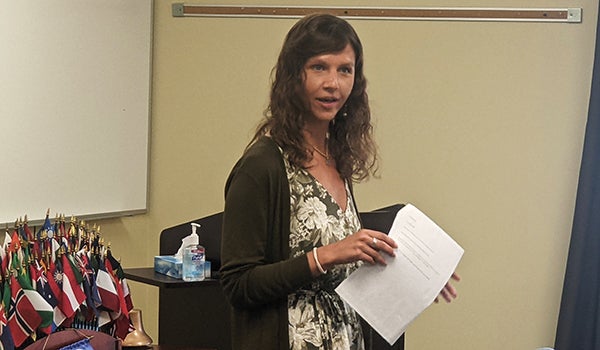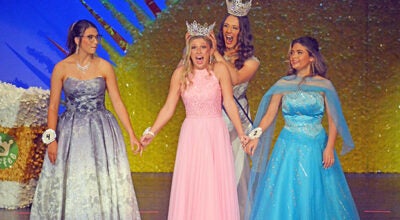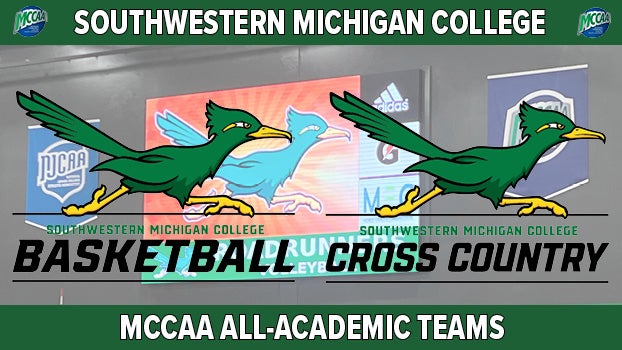ETS program awarded grant from Department of Education
Published 2:50 pm Friday, September 17, 2021
|
Getting your Trinity Audio player ready...
|
By MAXWELL HARDEN
max.harden@leaderpub.com
DOWAGIAC — A local career prep program will continue to help area middle school and high school students attain the means to be successful at the next level.
Southwestern Michigan College’s Educational Talent Search program was recently awarded $1.8 million dollars in grant funding over the next five years by the Michigan Department of Education.
Under the new grant cycle, the funding commenced on Sept. 1 and will end Aug. 31, 2026. The grant award amounts to an annual award of $365,010 over the next five years.
Maria Kulka, director of Southwestern Michigan College’s Educational Talent Search, was on hand during Thursday’s club meeting to discuss the program.
ETS is a federally funded TRIO program aiming to enhance and ensure the academic and personal success of selected eligible students. TRIO Programs are federal outreach and student services programs designed to identify and provide services for individuals from disadvantaged backgrounds.
The program services students in grades six through 12 in Brandywine, Cassopolis, Dowagiac, Edwardsburg and Marcellus school districts. ETS advocates for the successful completion of high school and to advance on to college and/or training after high school with the goal of providing opportunities for students to reach their maximum potential.
“We want our students to graduate from high school and be successful,” Kulka said. “We also want them to move on to post-secondary education, whether it be community college for certification or an Associate’s Degree or a Bachelor’s at a four-year institution, we help them navigate the post-secondary system.”
To be eligible to participate in ETS, students must:
• Be a U.S. citizen or eligible resident
• Attend one of the target schools (Brandywine, Edwardsburg, Marcellus, Dowagiac and/or Cassopolis)
• Complete and return Student Application and Parent Information Form
• Preference given to students who are both first generation (parent did not complete a 4-year degree) and who meet income requirements
Services ETS provides to students include free tutoring, summer camps, college readiness workshops, college visits, study skills workshops, career/major exploration, ACT/SAT prep, assistance completing college applications, financial aid workshops, cultural activities and more.
Kulka and her staff push for students to find success not only at four-year colleges, but trade schools, too.
“I think we have a lot of students that are graduating who have had sisters and brothers who went off to college, got a four-year degree and they’re really not doing anything with that degree,” Kulka said. “So they’re leery of the post-secondary system. It’s our job to help these students figure out what they want to do after college and that’s something that counselors do but can’t do enough because they just don’t have the time. So we’re kind of there to fill that gap.”
ETS program objectives:
• Secondary School Persistence: 90 percent of non-senior participants served each project year will complete the current academic year and continue in school for the next academic year, at the next grade level.
• Secondary School Graduation (regular secondary school diploma): 95 percent of seniors served during the project year will graduate during the project year with a regular secondary school diploma within the standard number of years.
• Secondary School Graduation (rigorous secondary school program of study): 90 percent of seniors served during the project year will complete a rigorous secondary school program of study and will graduate during the project year with a regular secondary school diploma within the standard number of years.
• Postsecondary Education Enrollment: 70 percent of participants, who have graduated with a regular secondary school diploma, during the project year, will enroll in an institution of higher education by the fall semester immediately following high school graduation or will have received notification, by the fall semester immediately following high school, from an institution of higher education, of acceptance but deferred enrollment until the next academic semester (e.g., spring semester).
• Postsecondary Attainment: 45 percent of participants served during the project year, who enrolled in an intuition of higher education, by the fall semester immediately following high school graduation or by the next academic semester (e.g., spring semester) as a result of acceptance but deferred enrollment will complete a program of postsecondary education within six years.







